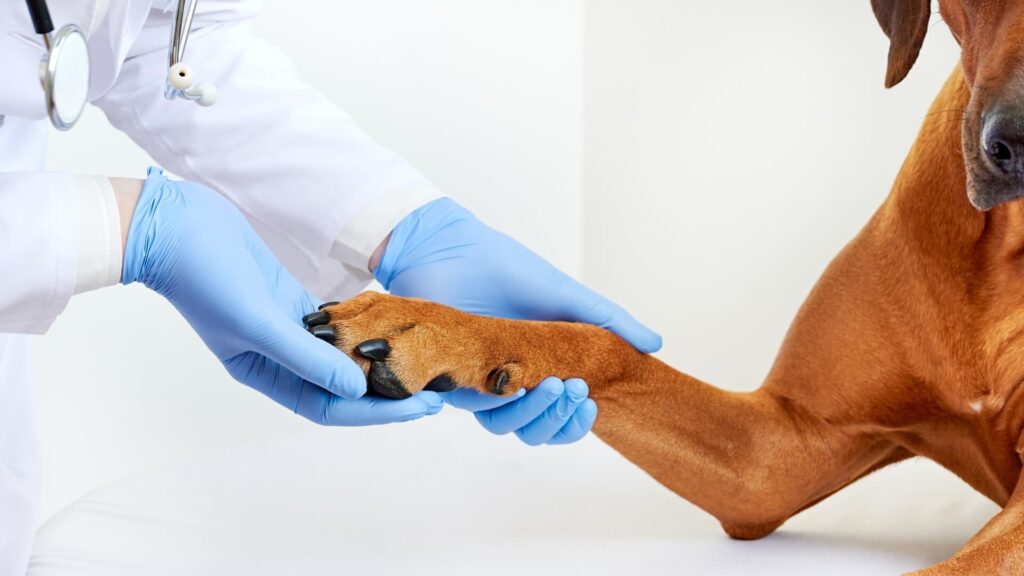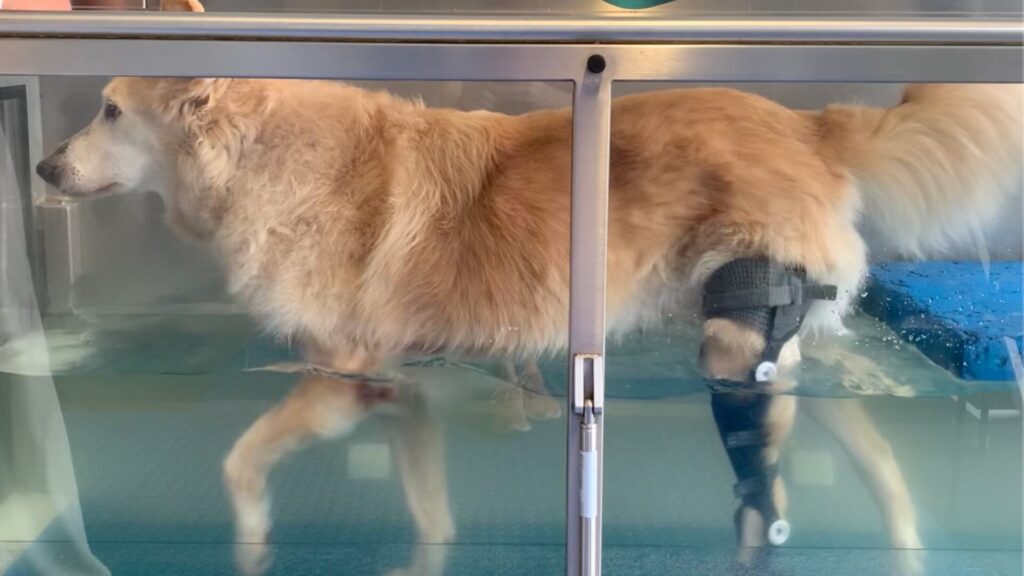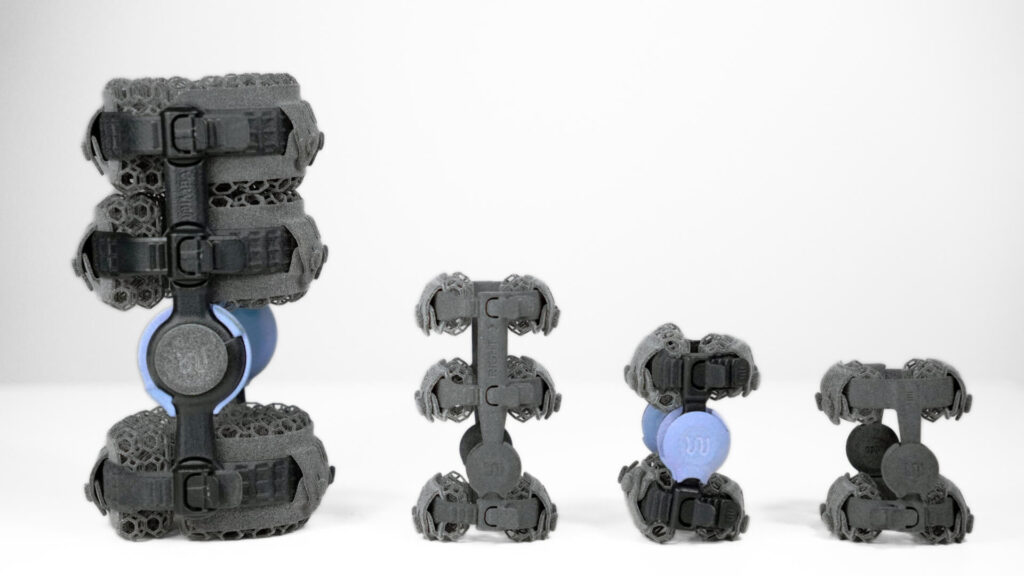Dogs can be incredibly stoic. Many will continue to walk, play, and even wag their tails despite significant pain. For pet parents, this can make it challenging to recognize when something is wrong — especially when the pain is subtle or chronic.
Learning to identify the early signs of discomfort is one of the most valuable things you can do for your dog. Addressing pain early not only prevents further injury but can also improve mobility, behavior, and quality of life — sometimes in dramatic ways.

Written by:
Dr. Emily Hall DVM, CCRT, CPAT-KA
Understanding Pain in Dogs
Pain in dogs isn’t always obvious. It can be acute, like after an injury or surgery, or chronic, such as in degenerative joint disease. Some dogs experience acute-on-chronic pain, where an existing low-level issue suddenly worsens. Another concern is “wind-up pain”, a well-documented phenomenon in veterinary literature where the nervous system becomes sensitized over time, making even minor stimuli feel more intense.
In cases like this, pain can become a condition of its own — not just a symptom. That’s why it’s so important to manage pain early and effectively.

The Link Between Pain in Dogs and Behavior
Pain and behavior are closely connected. A dog that seems moody, withdrawn, reactive, or even just “not themselves” may be experiencing chronic discomfort. Common changes include:
- Reluctance to jump up or use stairs
- Sleeping more or choosing unusual resting positions
- Hesitating on walks or lagging behind
- Unexplained growling, snapping, or avoidance
- Licking or chewing at joints or limbs
These behaviors are often mistaken for aging or personality shifts, when in reality they are the only way your dog can say, “Something isn’t okay, and I need you to be my voice.”
Pain in Dogs Must Be Addressed First
Managing pain is always the priority. While identifying and treating the underlying cause is essential, dogs in pain are less able to move properly, respond to therapy, or heal effectively. A multimodal pain management plan may include these and many other modalities:
- Medications (such as anti-inflammatories or nerve pain modulators)
- Cold or heat therapy
- Environmental modifications
- Orthopedic support devices
- Some cases require surgery
Pain management paves the way for healing — and often, for rediscovering a dog’s joyful spirit.

What Is a Pain Trial?
In some cases, especially when clinical signs are vague, your veterinarian may recommend a pain trial. This involves giving your dog prescribed pain-relieving medication for a short period — typically a few days to a week — to see if there’s an improvement in mobility, mood, or activity level.
A positive response doesn’t just suggest your dog was in pain — it confirms it. A pain trial can be a powerful tool for uncovering silent discomfort and guiding future treatment.
What You Can Do: Actionable Steps for Pet Parents
If you suspect your dog may be in silent pain, here’s what you can do:
1. Reach Out for a Veterinary Exam
A thorough evaluation is the best place to start. Your vet can assess joint stability, neurologic function, and mobility, and may recommend imaging if needed. Go ahead and bring videos from home of what you are currently seeing, just in case the adrenal of the veterinary trip changes their symptoms temporarily for the exam.
2. Discuss a Pain Trial
If the signs are subtle, ask whether a short-term trial of pain relief is appropriate to help assess whether discomfort is present.
3. Seek a Rehabilitation Referral
Veterinary rehabilitation therapists can offer tailored care plans that combine exercise therapy, manual techniques, and assistive devices to relieve pain and restore movement.
4. Consider Supportive Orthotics
Custom orthoses can support weakened joints or ligaments, helping dogs stay active while reducing pain. These devices are often part of a complete rehab plan and may delay or even avoid the need for surgery.

5. Track Changes at Home
Keep a journal of your dog’s habits, movement, and behavior. Even small shifts in posture, energy, or appetite can help your vet spot pain patterns more easily.

Every Dog Deserves to Feel Good
Pain in dogs is not always loud — but that doesn’t mean it isn’t real. Acting early can prevent a cascade of complications, from joint deterioration to behavioral issues. With thoughtful care, collaborative veterinary input, and tools like rehabilitation therapy and WIMBA orthoses, many dogs regain comfort and confidence — and get back to doing what they love.
Download WIMBA Canine Pain Assessment Checklist
Are you worried you may be missing silent pain in your canine companion? Get clarity and don’t wait to hear what your friend may be trying to share. WIMBA’s veterinarian and Certified Canine Rehabilitation Therapist has put together this helpful assessment you can do in the comfort of your home.

Medical Disclaimer: All information on this website is intended for instruction and information purposes only, The authors are not responsible for any harm or injury that may result. Significant injury risk is possible if you do not follow the due diligence and seek suitable professional advice about your dog’s specific situation. No guarantees of specific results are expressly made or implied on this website.






